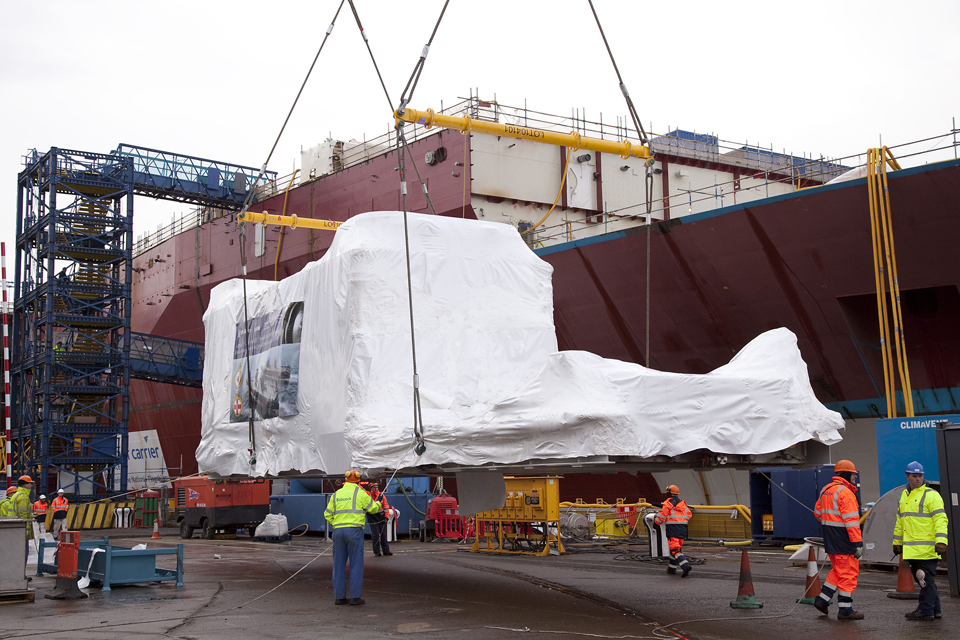Navy's new carrier receives first massive gas turbine
The first of the world's most powerful marine gas turbines has been installed in the Royal Navy's new aircraft carrier HMS Queen Elizabeth at Babcock's Rosyth shipyard in Scotland.
![A computer-generated image of new Royal Navy aircraft carrier HMS Queen Elizabeth at sea [Picture: via MOD]](https://assets.publishing.service.gov.uk/media/5a612aa840f0b65266e7dff1/s300_carrierg.jpg)
A computer-generated image of new Royal Navy aircraft carrier HMS Queen Elizabeth at sea
The Rolls-Royce MT30, at 36 megawatts (around 50,000 horsepower), is the world’s most powerful marine gas turbine engine. Two MT30s will be installed in each of the 2 new Queen Elizabeth Class aircraft carriers and will provide two-thirds of the 109 megawatts needed to power the 65,000-tonne ships - enough electricity to power a town the size of Swindon.
The power generated will meet the carriers’ demand for energy, which includes the propulsion motors, weapons and navigation systems as well as the entire low-voltage requirements for lighting and power sockets.
The MT30s are being installed as part of a gas turbine alternator which also includes an alternator and gas turbine enclosure, weighing a total of 120 tonnes.
Tony Graham, Director Ships, said:
The successful achievement of this major milestone has brought the biggest grin to my face since Christmas Day.
To have successfully lifted the most powerful engine in the Royal Navy onto the biggest ship ever built for the Royal Navy using the biggest capacity gantry crane in Europe is an important event in the construction of the Queen Elizabeth.
Everyone involved should take huge pride in their contribution to this national endeavour.

The Rolls-Royce MT30 gas turbine enclosure, shrink-wrapped for protection, prior to installation on HMS Queen Elizabeth at Babcock's Rosyth shipyard in Scotland [Picture: Rolls-Royce]
The installation involved the lifting of the MT30 gas turbine and associated ancillary equipment - housed in a steel package known as the gas turbine enclosure - onto the ship’s structure. With the enclosure in place, the large alternator, which is driven by the gas turbine to produce electrical power, was then hoisted into place.
Currently being built at shipyards around the country, HMS Queen Elizabeth and HMS Prince of Wales are the future flagships of the nation.
Both ships are being constructed in one of the most demanding and revolutionary shipbuilding programmes ever undertaken, with the pieces being slotted together in a specially-extended dry dock. Both ships are expected to serve for up to 50 years.